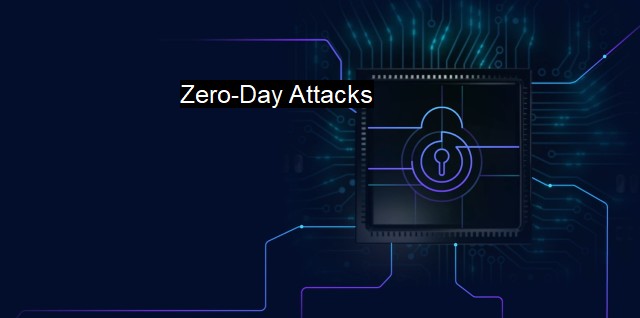What are Zero-Day Attacks?
Zero-Day Attacks: The Increasingly Advanced Threat to Cybersecurity and the Need for New Defenses
Zero-day attacks, with represent both an exciting analytical challenge for IT experts and a substantial security danger for systems worldwide. Loosely defined, zero-day is a hole in software that is unknown to the vendor. A zero-day attack, on the other hand, refers to an assault where the attackers exploit that security weakness before the vendor or the public is aware of it.The concave faces of encryption algorithms, the intricacies in data hosting, and the robust requirements of network infrastructure often overshadow a surprisingly perceptible fact: most software on our global systems are beschmutzt with imperfections or construct errors known as bugs. Zero-day attacks leverage these bugs to infiltrate the software. Coupled with their stealthiness where they remain undetected until exploited, they represent a significant challenge in the cybersecurity world.
The term "zero-day" originated from the world of hacking and utilities forums, silhouettes of an ultra-smart collective global intelligence stockpiling disclosures of such anomalies. The semantic association is with 'Day Zero' or 'The Day of Disclosure,' the day when the attack first becomes apparent and the bug is publicly recognized, the vendor or parties responsible become cognizant that there is an issue—an attack utilizing unknown vulnerabilities.
An attack type that is increasing as software becomes more intricate and intertwined, the modus operandi can range from simple innocuous channel-based elevator phishing to an intricate labyrinthian group exploit aiming for large scale disturbance and data gaps. Threat actors who identify a zero-day vulnerability often hoard these exploits due to their value. Once discovered, the developer usually patches the loophole, rendering the discovery useless hence, the concept of it being a “race against time.”
Zero-days can be used to distribute malware, ransomware, or spyware, seize system control, abscond with data, or simply introduce chaos into network systems. Their effectiveness is amplified by the duration they remain undetected. During that time, it can be exploited repeatedly, allowing the cybercriminal to wreak havoc on both individual computers and entire network systems.
Strengthening both the cyber offense and defense, the identity of a threat actor exploiting zero-day attacks can range from individualistic lone-wolf hackers to state and non-state-sponsored cybercriminal organizations. Considering the scarce detection mechanisms and the high payout perspective from clandestine entities, the dangerous attractiveness of zero-day attacks in the dark web black market, classified intelligence landscape, or for self-use cannot be denied. Their existence paints a stark picture of the ongoing arms race in the cyber domain.
The best protection against zero-day attacks is a fusion of several symbiotic strategies. These include the use of virtual private networks (VPNs), keeping software and security patches updated, installing reliable antivirus software, a robust intrusion detection system, and an intrusion prevention system.
Security researchers and companies constantly review code and hardware looking for these vulnerabilities, as well as developing AI systems for automatic search. They use tactics such as fuzzing, where code is bombarded with random data to try and trigger unanticipated responses, and sandboxing, in which new or suspicious code is run separately from a system's crucial components.
The arresting nature of zero-day attacks lies in their quiet existence, the loud echoes of their exploitation, and the silent resilience of systems face to cyber breaches than ever before. Today the realms of cybersecurity and antivirus hold a crucial era of symbiotic fortitude, and zero-day attacks stand as testament to the escalating yet fascinating chess-like dimensions of cybersecurity.

Zero-Day Attacks FAQs
What is a zero-day attack?
A zero-day attack is a type of cyber attack that exploits a previously unknown vulnerability in computer software or hardware. It is called "zero-day" because it is performed before the software or hardware vendor has a chance to address the vulnerability.How are zero-day attacks different from other types of cyber attacks?
Unlike other types of attacks, zero-day attacks are more dangerous because they are not yet known to the software or hardware vendor, and therefore there are no patches or updates available to fix it. This makes it difficult for antivirus software to detect and protect against zero-day attacks because they are not yet included in the virus definitions.What can be done to prevent zero-day attacks?
To prevent zero-day attacks, it is important to keep all software and hardware up-to-date with the latest security patches and updates. It is also important to use antivirus software that includes behavioral-based detection and zero-day protection. Implementing a layered defense strategy that includes firewalls, intrusion prevention systems, and other security measures can also help to reduce the risk of zero-day attacks.How can organizations respond to a zero-day attack?
Organizations should have an incident response plan in place that outlines how to respond to a zero-day attack. This includes identifying the scope of the attack, containing it, and mitigating any damage. It is important to isolate infected machines or systems to prevent the spread of the attack. In addition, organizations should work with their antivirus vendor and security experts to develop a mitigation strategy and identify any necessary patches or updates.| | A | | | B | | | C | | | D | | | E | | | F | | | G | | | H | | | I | | | J | | | K | | | L | | | M | |
| | N | | | O | | | P | | | Q | | | R | | | S | | | T | | | U | | | V | | | W | | | X | | | Y | | | Z | |
| | 1 | | | 2 | | | 3 | | | 4 | | | 7 | | | 8 | | |||||||